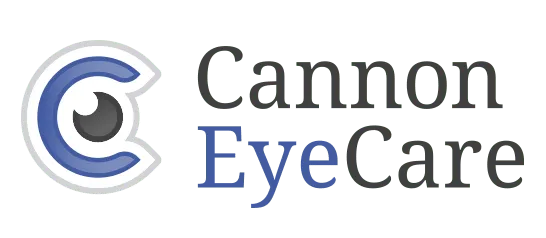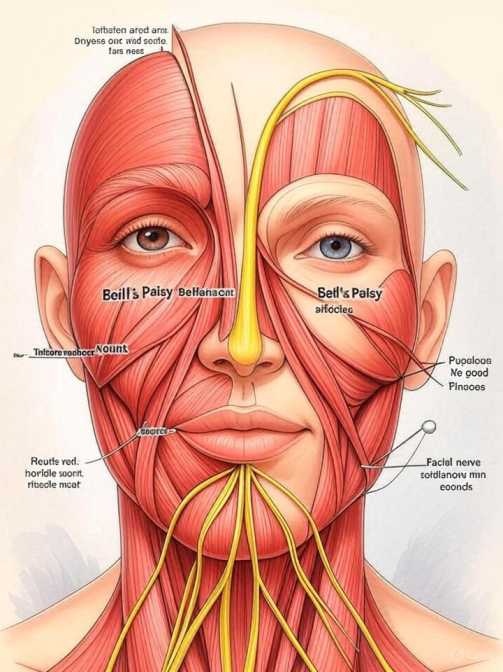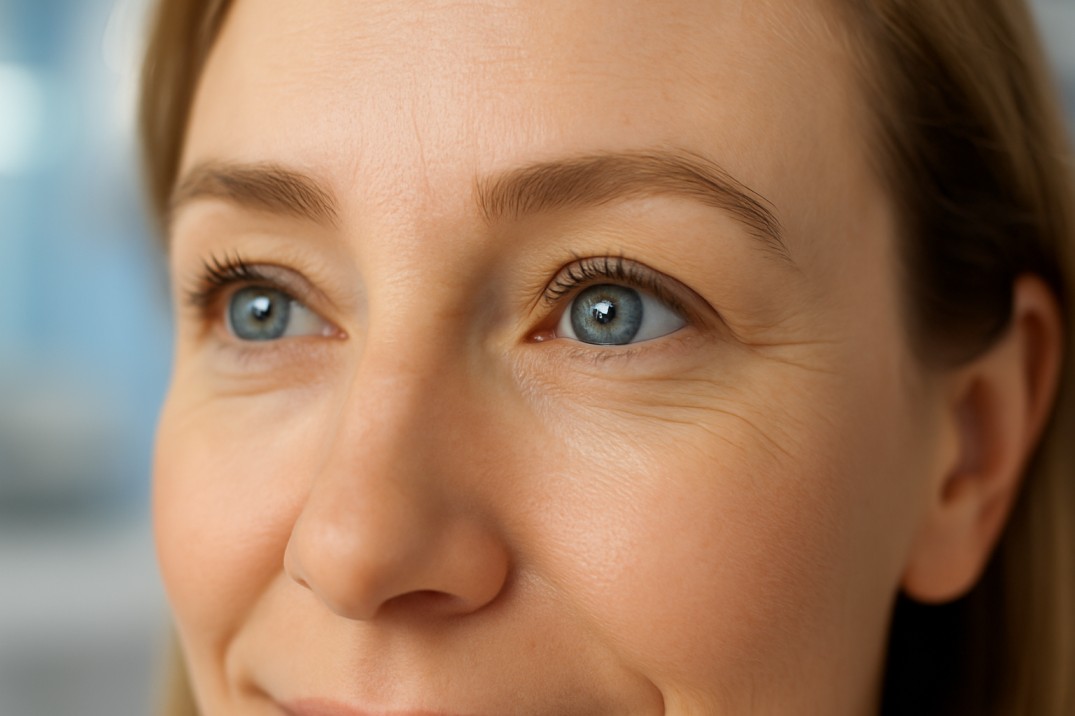Bell’s Palsy
“Bell’s palsy can strike suddenly—leaving one side of your face weak or drooping. Learn the signs, causes, and treatments that can speed recovery and protect your facial health.”
Key Takeaways
-
Act fast — starting treatment for Bell’s palsy within 72 hours significantly improves recovery outcomes.
-
Differentiate quickly — learn the key signs separating Bell’s palsy from stroke to avoid dangerous delays.
-
Protect your eyes daily — artificial tears, UV eyewear, and nighttime moisture shields prevent corneal damage.
-
Use targeted therapy — corticosteroids, antiviral combinations, and guided facial exercises boost nerve healing.
-
Adopt Seattle-friendly care — humidifiers, climate-specific eye protection, and anti-inflammatory foods support recovery.
-
Track progress — early improvement within 2 weeks signals a strong prognosis; delayed recovery needs specialist follow-up.
-
Address emotional health — connect with local support groups, counseling, and peer networks to stay motivated during recovery.
Understanding Bell’s Palsy in Seattle
What Is Bell’s Palsy?
Bell’s palsy is a sudden neurological condition causing one-sided facial weakness or paralysis. Named after 19th-century Scottish surgeon Sir Charles Bell, it affects the seventh cranial nerve, controlling facial expressions.
Facial Nerve Functions Explained
This critical nerve enables:
-
Facial expressions (smiling/frowning)
-
Eye closure and blinking reflexes
-
Tear and saliva production
-
Front tongue taste sensation
-
Middle ear muscle control (hearing sensitivity)
Nerve inflammation or compression disrupts these functions, causing Bell’s palsy symptoms.
Primary Causes & Mechanisms
While the exact trigger remains unknown, clinical evidence points to viral origins:
-
Herpes simplex virus (HSV-1) – Cold sore virus
-
Epstein-Barr virus – Mono connection
-
Varicella-zoster virus – Chickenpox/shingles agent
-
Cytomegalovirus – Herpes family member
These infections inflame the facial nerve within its narrow bony canal, compressing nerve signals to facial muscles.
Bell’s Palsy Risk Factors in Seattle
Affects all demographics, but higher risk for:
-
Age: 20-4 years old (most common)
-
Pregnancy: Third-trimester vulnerability
-
Diabetes: Nerve damage susceptibility
-
Recent Illness: Post-respiratory infections
-
Immune Compromise: Stress/health-related
Seattle-Specific Insight:
Approximately 40,000 Americans develop Bell’s palsy annually. At our Seattle clinics, we treat diverse cases from Capitol Hill professionals to Bellevue retirees, reflecting our region’s varied population.
Recognizing Bell’s Palsy Symptoms & Seattle Care Guidelines
Bell’s palsy symptoms escalate rapidly, peaking within 48-72 hours. Recognizing these signs helps distinguish it from stroke and guides timely intervention.
Primary Symptoms
One-Sided Facial Effects:
-
Facial Muscle Weakness:
-
Eyebrow/mouth drooping
-
Incomplete eye closure
-
Impaired smiling/expressions
-
-
Functional Challenges:
-
Unilateral drooling
-
Speech difficulties
-
Secondary Symptoms
Common Co-Occurring Issues:
-
Precursor ear pain
-
Reduced front-tongue taste
-
Abnormal tearing or dry eye
-
Sound sensitivity (hyperacusis)
-
Eating/drinking difficulties
-
Headaches/facial discomfort
Bell’s Palsy vs. Stroke: Critical Differences
Urgent Differentiation Guide:
Bell’s Palsy Indicators:
✓ Entire side affected (including forehead)
✓ Eye moisture changes
✓ Taste/hearing alterations
✓ Ear-area pain
✗ No limb weakness
Stroke Warning Signs:
✗ Forehead often spared
✓ Arm/leg weakness (same side)
✓ Slurred speech/confusion
✓ Severe headache
✓ Vision loss/dizziness
Seattle Emergency Protocol:
-
Suspected stroke: Call 911 immediately
-
Uncertain paralysis: Visit UW Medical Center or Virginia Mason ER
-
Non-emergent symptoms: Contact Cannon EyeCare
When to Seek Seattle-Specific Care
Consult Cannon EyeCare if experiencing:
-
Sudden facial weakness (hours/days onset)
-
Eye exposure risk from incomplete blinking
-
Symptoms persisting beyond 3 weeks
-
Treatment/recovery questions
Bell’s Palsy Diagnosis at Cannon EyeCare, Seattle
Bell’s palsy diagnosis involves clinical examination and exclusion of other conditions. Our Seattle clinic uses comprehensive evaluation protocols for precise diagnosis and treatment planning.
Clinical Evaluation Process
In-Person Assessment:
-
Facial Function Tests:
-
Muscle weakness grading
-
Eye closure/blink reflex analysis
-
-
Sensory Checks:
-
Tear production measurement
-
Front-tongue taste evaluation
-
-
Neurological Screening:
-
Hearing sensitivity assessment
-
Rule-out protocols for stroke/tumors
-
Advanced Diagnostic Testing
Seattle-Specific Technology:
-
Electroneurography (ENoG):
-
Nerve electrical activity measurement (days 14-21)
-
Recovery prognosis prediction
-
Guides aggressive treatment decisions
-
-
Electromyography (EMG):
-
Muscle activity tracking (post-week 3)
-
Nerve regeneration monitoring
-
-
Imaging Studies:
-
MRI/CT for atypical cases
-
Tumor/structural cause exclusion
-
Differential Diagnosis
Conditions Ruled Out in Seattle Practice:
-
Ramsay Hunt Syndrome (Herpes zoster complication)
-
PNW-Relevant Infections:
-
Lyme disease (regional tick-borne risk)
-
-
Structural Issues:
-
Acoustic neuromas
-
Skull base fractures
-
-
Neurological Conditions:
-
Guillain-Barré syndrome
-
Multiple sclerosis
-
Bell’s Palsy Treatment Options in Seattle
Early intervention dramatically improves Bell’s palsy outcomes. Seattle patients starting treatment within 72 hours of symptom onset achieve optimal results.
First-Line Medical Therapies
Evidence-Based Protocols:
-
Corticosteroids (Prednisone):
-
Start within 72 hours
-
60-80mg/day (5-7 days), then taper
-
94% recovery rate at 9 months
-
Reduces inflammation and long-term complications
-
-
Antiviral Combinations:
-
Acyclovir/Valacyclovir + steroids
-
Initiate within 3-4 days
-
Limited effectiveness alone
-
Critical Eye Protection
Seattle-Specific Strategies:
Daytime Care:
-
Hourly artificial tears
-
UV-protective eyewear (essential for PNW cloud breaks)
-
Blinking exercises
Nighttime Protection: -
Moisture-retaining ointments
-
Humidifiers combating Seattle’s dry indoor air
-
Custom eye shields (fitted at Cannon EyeCare)
Emerging Seattle-Accessible Therapies
-
Medical Acupuncture:
Evidence for faster recovery (UW Medicine studies) -
Low-Level Laser Therapy:
Available at Seattle rehabilitation centers
Reduces inflammation non-invasively -
Physical Therapy:
Swedish Medical Center’s facial retraining program
Mirror therapy for motor relearning
Realistic Treatment Expectations
Treatment Can:
✓ Reduce nerve inflammation
✓ Prevent corneal damage
✓ Maintain muscle function
✓ Minimize long-term complications
Treatment cannot:
✗ Provide immediate restoration
✗ Guarantee 100% recovery
✗ Eliminate all residual symptoms
✗ Accelerate beyond natural healing
Bell’s Palsy Recovery Timeline & Seattle Prognosis
Understanding recovery patterns reduces anxiety and sets realistic expectations. Most Seattle Bell’s palsy patients see significant improvement, though timelines vary.
Typical Recovery Phases
Seattle-Specific Observations:
-
First 48-72 Hours:
-
Peak symptom severity
-
Critical steroid treatment window
-
Urgent eye protection initiation
-
-
Weeks 1-3:
-
Early recovery signs (70-85% patients)
-
Muscle twitching/improved tone
-
Continued eye care needs
-
-
Months 1-3:
-
Major functional improvements
-
Return of expressions/eating/speech
-
-
Months 3-6:
-
Fine motor coordination
-
Final recovery assessment
-
Recovery Influencing Factors
Key Prognostic Indicators:
-
Age:
<40 years: Better outcomes
Children: Excellent recovery60 years: Slower/incomplete healing
-
Clinical Factors:
Complete vs. partial initial paralysis
Treatment within 72 hours
Diabetes/health status
Treatment compliance
Seattle Recovery Statistics
Cannon EyeCare Patient Outcomes:
-
70-85%: Full recovery by 6 months
-
15-20%: Mild residual weakness
-
5-10%: Significant long-term symptoms
-
<5%: Permanent severe disability
Early improvement (first 2 weeks) predicts an excellent prognosis. Delayed recovery warrants a UW Medicine neurology consultation.
Long-Term Complications Management
Seattle Treatment Approaches:
-
Synkinesis (15-20%):
-
Involuntary muscle movements
-
Treated at Swedish Medical Center’s Facial Nerve Clinic
-
Botox + physical therapy
-
-
Chronic Weakness:
-
Mild asymmetry management
-
Bellevue cosmetic specialists
-
Neuromuscular retraining
-
Home & Lifestyle Management for Bell’s Palsy in Seattle
Effective home care accelerates recovery and improves daily living. Seattle families implement these evidence-based strategies for optimal outcomes.
Daily Eye Care Protocol
PNW Climate Adaptations:
Morning Routine:
-
Gentle eyelid massage
-
Artificial tears (every 2-3 hours)
-
UV-protective eyewear (essential for Seattle’s variable light)
-
Blinking exercises
Evening Care: -
Debris removal cleaning
-
Moisture-retaining ointments
-
Medical-grade eye taping
-
Humidifier use (combats seasonal dryness)
Safe Eating & Drinking
Seattle Nutritionist-Approved:
-
Swallowing Techniques:
-
Slow, careful chewing
-
Upright posture during meals
-
Temperature-safe foods
-
-
Dietary Support:
-
Hydration focus (8 glasses daily)
-
Anti-inflammatory foods (wild salmon, berries)
-
Vitamin B12 supplementation (UW Medicine recommended)
-
Communication Strategies
Speech & Social Adaptations:
-
Verbal Adjustments:
-
Slowed, deliberate speech
-
Gesture integration
-
Articulation exercises
-
-
Tech Solutions:
-
Voice-to-text apps
-
Video call socializing
-
Pre-programmed response shortcuts
-
Work & Social Accommodations
Seattle-Specific Support:
-
Workplace Modifications:
-
Flexible appointment scheduling
-
Reduced public-facing duties
-
Microsoft/Amazon accommodation programs
-
-
Social Integration:
-
Condition explanation templates
-
Seattle Facial Paralysis Support Group
-
Low-pressure social outings (e.g., SAM visits)
-
Bell’s Palsy Physical Therapy in Seattle
Structured facial exercises enhance recovery while preventing complications. These evidence-based techniques maintain muscle tone and promote proper nerve regeneration during healing.
Exercise Initiation Timeline
Seattle-Specific Protocol:
-
Start 2-3 weeks post-onset
-
Begin with gentle stimulation
-
Avoid overexertion
-
Requires Cannon EyeCare clearance
Preparatory Techniques
PNW Clinic Recommendations:
-
Facial Stimulation:
-
Gentle 3-minute massage (forehead/cheeks/chin)
-
Fingertip circulation boost
-
-
Warm-Up:
-
Moist heat application
-
Swedish Medical Center’s myofascial release methods
-
Targeted Exercises
UW Medicine-Approved Techniques:
- Eyebrow/Forehead:
✓ Assisted eyebrow raises (5-sec hold, 15 reps)
✓ Brow furrowing + upward gaze - Eye Closure:
✓ Gentle eyelid closure (no squeezing)
✓ Finger-assisted holds (3-5 sec, 20 reps)
✓ Alternating winks - Cheek/Nose:
✓ Puffed-cheek holds (5 sec)
✓ Nostril flaring + deep breaths
✓ Assisted nose scrunches - Mouth/Lips:
✓ Slow-motion kissing pucker
✓ Finger-assisted smiling
✓ Vowel articulation practice
✓ Empty chewing motions
Exercise Guidelines
Seattle Best Practices:
-
Frequency: 3-4 daily sessions (15-20 min)
-
Execution:
-
Mirror monitoring for symmetry
-
10-20 reps per exercise
-
Immediate stop if pain/fatigue
-
-
Professional Support:
-
Virginia Mason physical therapy consultations
-
Progress-adjusted programs
-
Biofeedback at UW Rehabilitation Clinic
-
Electrical stimulation (select cases)
-
Emotional Support & Coping Strategies for Seattle Bell’s Palsy Patients
Bell’s palsy impacts emotional well-being alongside physical function. Addressing these challenges is essential for holistic recovery in Seattle’s communities.
Psychological Impact Management
Common Emotional Responses:
-
Shock from sudden appearance changes
-
Recovery timeline anxiety
-
Social self-consciousness
-
Communication frustration
-
Recurrence fears
Seattle-Specific Insight:
Pacific Northwest gloomy winters may amplify mood challenges. Seasonal Affective Disorder lamps (available at Swedish Medical Center’s wellness store) can complement emotional care.
Building Seattle Support Networks
Personal Connections:
-
Educate family/friends using Cannon EyeCare resources
-
Maintain social routines (coffee walks at Green Lake)
-
Accept practical help with daily tasks
Structured Support:
-
In-Person:
-
Virginia Mason Facial Paralysis Group
-
UW Medicine Neuro-Emotional Wellness Workshops
-
-
Digital:
-
Bell’s Palsy Association Northwest Forum
-
Facebook Groups (e.g., “Seattle Facial Recovery Community”)
-
-
Mentorship:
-
Swedish Medical Center’s Peer Connect Program
-
Professional Mental Health Resources
When to Seek Help:
-
Depression >2 weeks
-
Anxiety disrupting work/school
-
Social isolation patterns
-
Suicidal ideation
Seattle-Accessible Therapies:
-
Cognitive Behavioral Therapy:
-
Seattle Anxiety Specialists
-
Overlake Counseling Associates
-
-
Group Therapy:
-
Harborview Mental Health Services
-
-
Family Counseling:
-
Seattle Children’s Hospital Family Support
-
Social Confidence Strategies
Daily Interactions:
-
Prepare simple explanations:
“Temporary facial nerve inflammation – improves with time!” -
Redirect focus to abilities:
“My vision/humor remains sharp!” -
Celebrate milestones at iconic Seattle spots (Space Needle, Pike Place)
Workplace Navigation:
-
Disclose condition using UW Medicine’s accommodation templates
-
Leverage Seattle employer programs:
-
Microsoft Mental Health Benefits
-
Amazon Flex-Time Options
-
-
Gradual return plans coordinated with Cannon EyeCare
Recovering from Bell’s palsy is possible with early diagnosis, proper treatment, and consistent care. Don’t ignore sudden facial weakness—acting fast can protect your long-term health.
Take Action Now:
If you or someone you know develops facial drooping, seek medical attention immediately. Learn more about effective treatments and recovery strategies—your future smile depends on it.
FAQs
-
Most people recover within 3-6 months, with 70-85% achieving complete recovery. Early signs of improvement typically appear within 2-3 weeks of onset.




